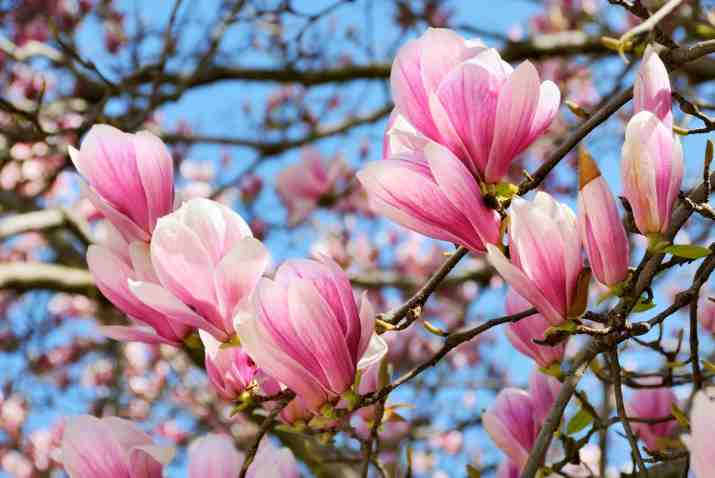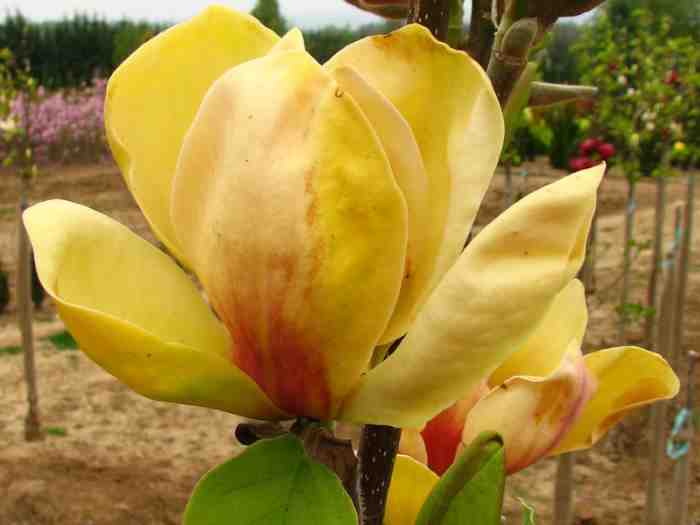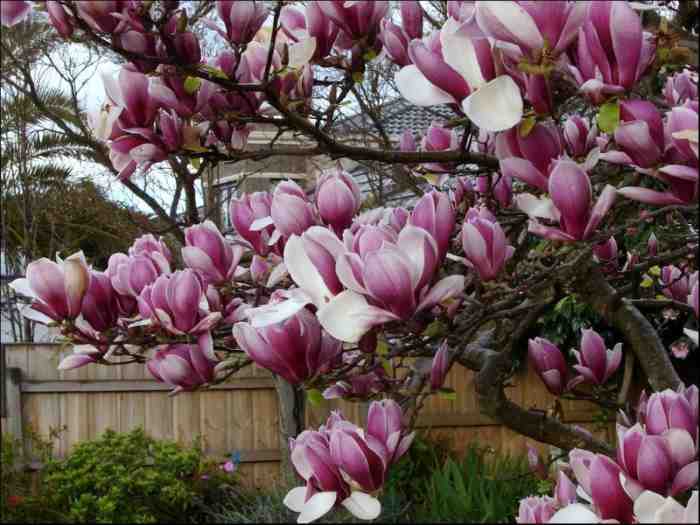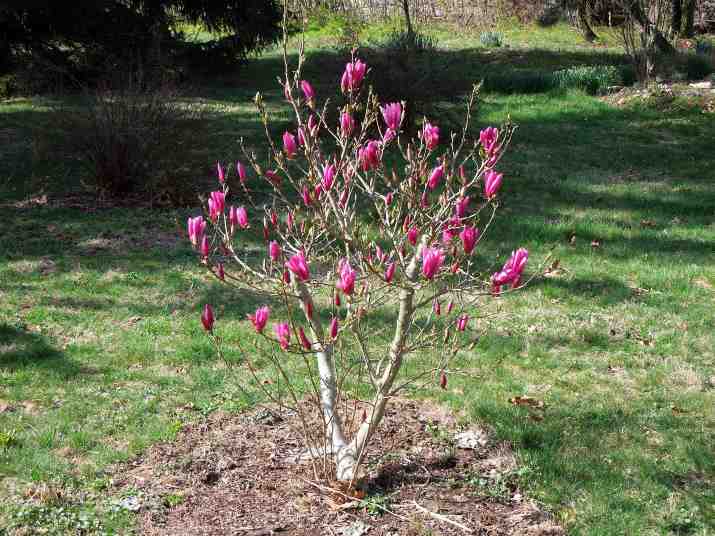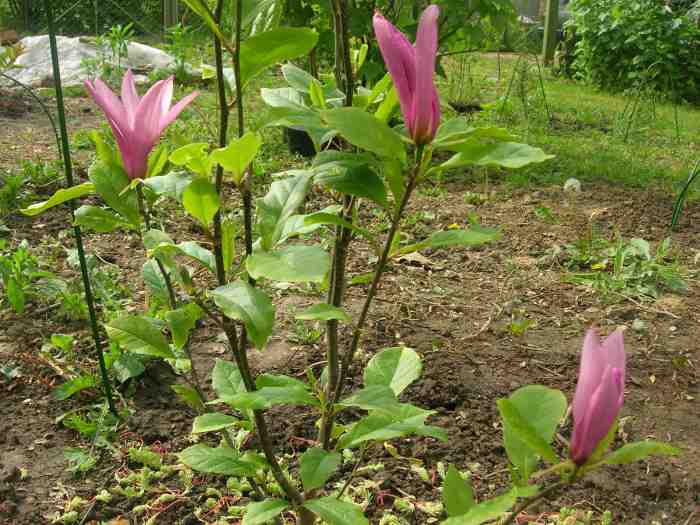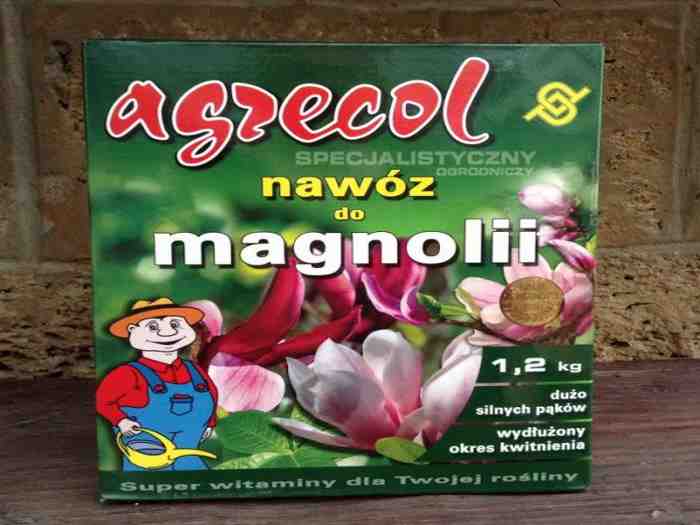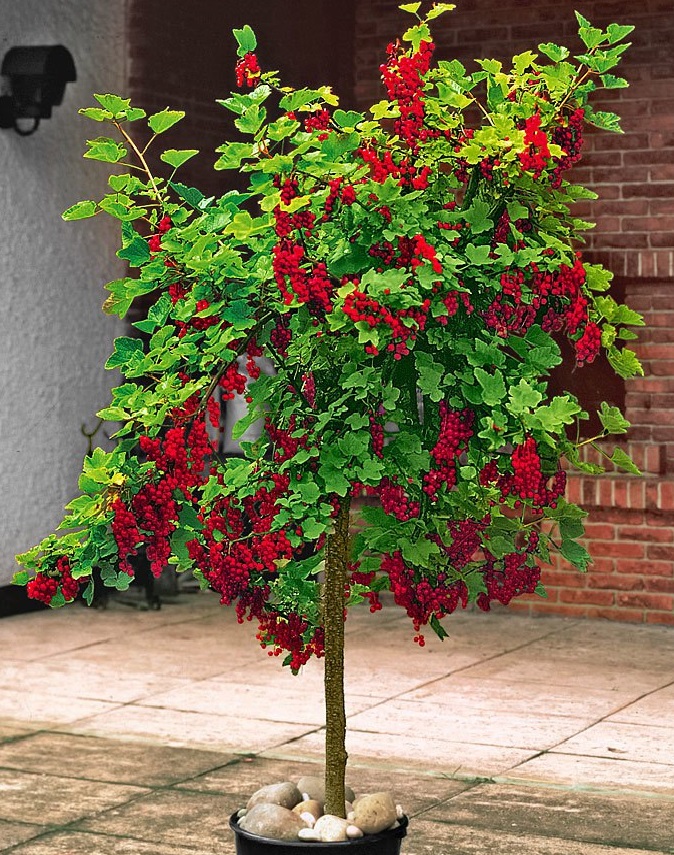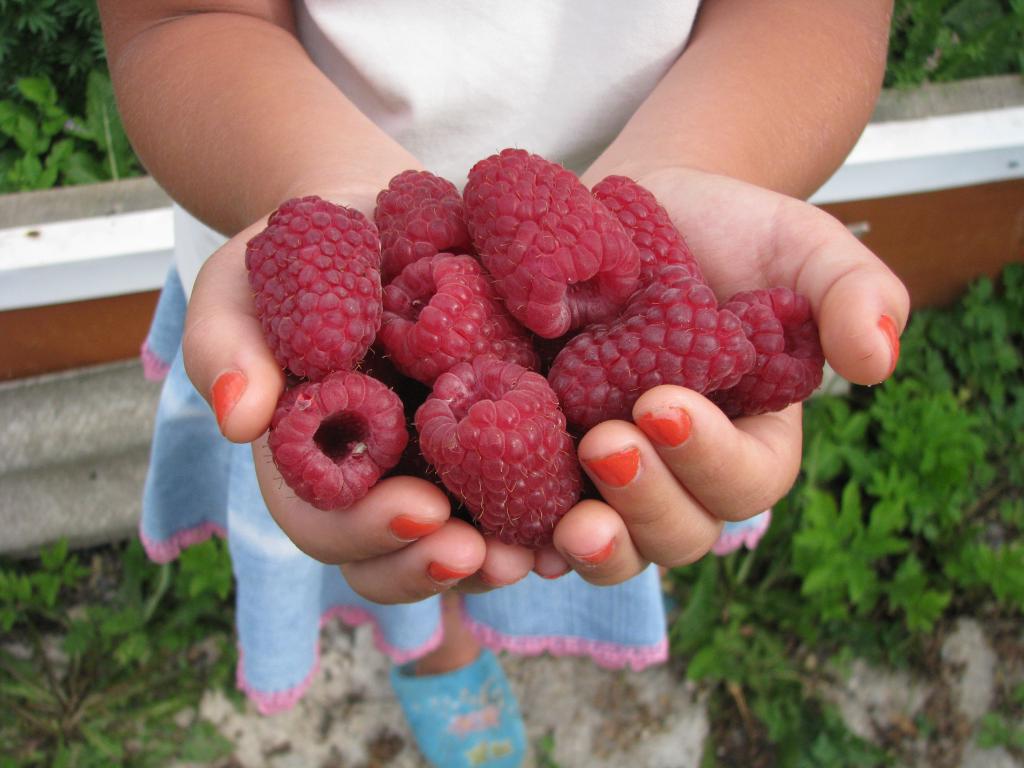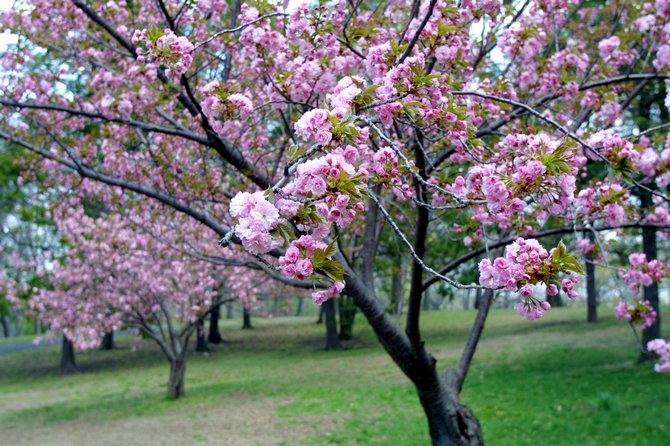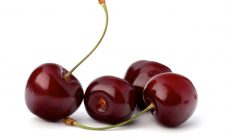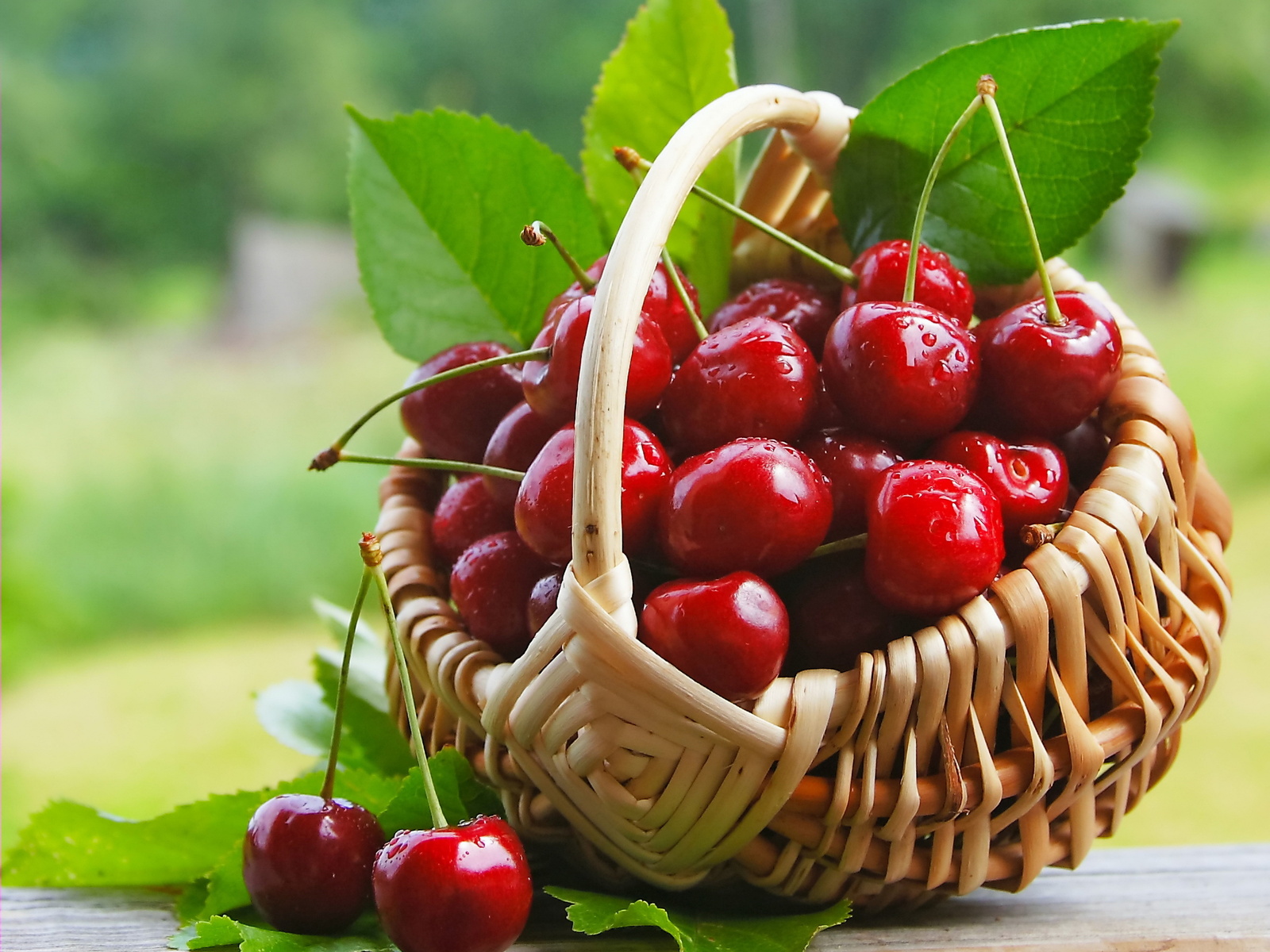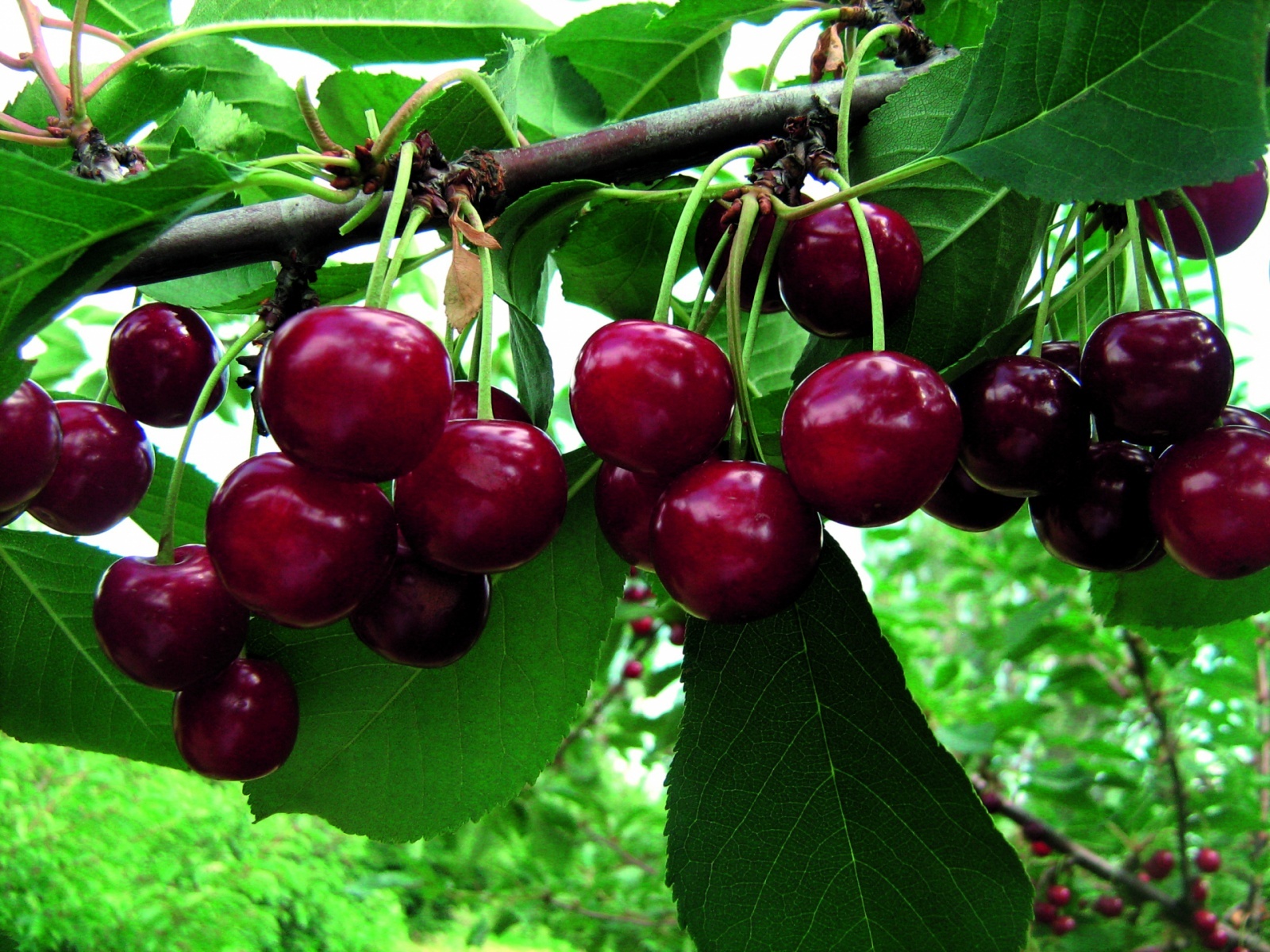Content:
Magnolia tree is deciduous or evergreen, grows up to 3-4 m in height. It blooms with fragrant flowers that bloom at the end of each twig. The flower is large in size, on average about 25 cm. The article provides tips for planting young seedlings, how to care for magnolia, ways to reproduce an ornamental tree at home.
Description and characteristics
The plant has been known since ancient times. There are many beliefs and legends about him. He is considered the ancestor of flowering trees and bushes.
The low bole of magnolia is appreciated not only for its magnificent appearance, but also for the useful essential oils that are contained in the leaves, flowers, and fruits. They are used in perfumery and traditional medicine. Magnolia oils help in the fight against hypertension, joint problems, and restore the functioning of the digestive system.
There are many varieties of magnolia to choose from. More than 80 species of plants are grown, which differ in size, appearance of flowers (the color can be purple, pink, white, cream, yellow), climatic requirements.
Choosing a landing site
First you need to choose the right variety for the region in which you plan to breed magnolia. Depending on the natural zone in which the magnolia tree will grow, the appropriate variety is selected. The tree does not tolerate frosty winters. The correct choice of varieties will enable gardeners to grow an ornamental plant in the garden.
The Lebner (white-flowered magnolia tree) and Kobus varieties are declared frost-hardy and are suitable for regions with cold winters. Magnolia from Ash, Soulange and Wilson are also frost-adapted, but less resistant than Cobus and Lebner. Magnolia varieties will allow you to choose a variety that is suitable for the region. Tulip liriodendron (magnolia tulip tree) is a plant of the magnolia family, a frost-resistant variety. The tulip tree can be grown in central Russia.
Magnolia and Liriodendron are very similar. There are several features that make tulip trees different from magnolias:
- Flower shape. Liriodendron resembles a tulip;
- The size and shape of the leaves.
Site requirements:
- The magnolia planting site must be protected from the wind. The plant can stop developing with constant drafts;
- A flowering tree grows well in the light, so it is recommended to choose a site that is sufficiently lit, but without direct sunlight. In an open area, magnolia varieties feel comfortable: Star, Kobus, Lebner.
To protect magnolias from the wind, they are planted next to taller trees. Neighborhood with fruit crops is undesirable - there is a risk of damaging flowering branches with falling fruits.
Optimal planting times
The ornamental tree can be planted outdoors in spring, summer or fall. The most favorable time for planting is autumn.
In the spring, the plant begins to grow actively, all energy is spent not on rooting, but on the development of the crown and flowers.During the spring and summer, an increase in young shoots is obtained, which do not have time to prepare for winter and die from frost. They begin to plant a young plant in April, when the air warms up to 15-18 degrees, but with sharp frosts, the tree may die.
In the fall, the tree is planted at rest. It survives the winter without difficulty. Magnolia is placed in open ground in mid-October. When planting, the root system should be closed, so the plant adapts faster to a new place. According to statistics, almost all young seedlings planted in autumn take root. Growing a magnolia flower at home does not require much effort from a gardener.
Soil requirements
Magnolia requires some care. If you know the peculiarities of planting and the rules of care, then growing a tree with flowers of extraordinary beauty will not cause trouble for the gardener.
A favorable soil for magnolia is considered to be moderately moist, drained, fertile, with a low level of acidity. The plant will not grow in saline or limestone soil.
Soil composition for planting:
- Peat mixture;
- Sod land (deciduous can be used);
- Sand.
It is better to purchase seedlings for planting in trusted stores. A plant with a closed root system quickly takes root in a new place during spring or autumn planting. The seedling should be from 1 m tall with several blossoming flowers. This way you can determine that this variety is suitable for the local climate.
Landing scheme
Having chosen strong seedlings for planting, an area illuminated and protected from the wind with suitable fertile soil, you can start planting magnolia.
Magnolia flower growing, step by step instructions:
- Preparing a hole for a seedling. The volume of the hole should be 2 times the volume of the roots;
- Mix the rotted compost with the nutrient layer of the top soil left after digging the hole. If the earth is dense, then a little sand is added to it;
- At the bottom of the hole, lay a drainage layer 20 cm thick. Broken bricks or crushed ceramic tiles can be used as drainage;
- Pour sand on the drainage layer, about 15-20 cm. A prepared nutrient mixture from a fertile soil layer and compost is poured over the sand;
- In the middle of the hole, place the seedling along with a lump of earth. To make it easier to remove the plant from the container, it is poured over with slightly warm water;
- The root collar of the seedling should be 5 cm above the ground. It does not need to be buried;
- The empty space of the hole is covered with soil mixture. The hole is tamped in a circle with your hands;
- Water each hole abundantly;
- After the water is well absorbed into the ground, the hole is sprinkled with mulch from peat, sawdust of coniferous trees. This will protect the young seedling from drying out;
- The distance between the seedlings should be 4-5 m. A group of trees planted along the perimeter of the site will look good.
The tulip variety begins to bloom in April, when the leaves have not yet blossomed on the tree. After flowering, the fruit is formed in the form of a cone-shaped composite leaflet.
Watering and feeding
Planting a seedling correctly is the key to the successful cultivation of an ornamental tree. For the rooting and development of a young plant, it needs care. The rules for caring for magnolia are almost the same as for fruit crops.
Young trees need regular abundant watering. In dry climates, watering is also recommended for an adult plant.
Watering can be done once a week. Each bush will need 10-15 liters of water. Dry summers can negatively affect the richness of the foliage and magnolia flowers, so the amount of watering during the hotter months can be increased as needed. After watering, lay a layer of mulch.Used last year's leaf, coniferous wood.
To loosen the ground for better air permeability, preferably every 3-4 weeks. Loosening carefully, going deeper by a maximum of 20 cm, since the tree has superficial roots. It is advisable to remove weeds by hand.
Recommendations for feeding Magnolia:
- You can start feeding 2 years after planting the seedling. When planting in a hole, a sufficient amount of fertilizer is added, it is enough for the development of the plant;
- In the spring, a mixture is used as a top dressing: urea (15 g), mullein (1 kg), ammonium nitrate (25 g);
- In autumn, you can feed it with a nitroammophos solution (20 g for 2 buckets of water);
- In special stores there are fertilizers "For Magnolia", "Kemira-Universal".
If you follow the recommendations for planting and caring for a magnolia shrub, you can grow a beautiful plant. To grow a healthy tree, it will need timely feeding.
If the foliage of the tree begins to fall off and dry prematurely, then this is a sign of a possible overdose of fertilizers. In this situation, abundant watering will help.
Reproduction
Magnolia can be propagated in several ways:
- Seeds. In the wild, magnolia trees can reproduce by seed. Birds and the wind carry the magnolia seed. For self-propagation by seeds, it is necessary to prepare planting material. Seed preparation: they are collected in the fall, stored in a cool place in a bag. For planting in a container, the seeds are processed. To do this, they are poured with water for three days, cleaned from the shell, washed in soapy water and rinsed in clean water. They are sown into a container, deepening by 3 cm, and then removed to the cellar. In the spring, boxes with seeds are placed on the windowsill. Seedlings begin to grow in a few weeks. After a year, the seedlings are ready for planting in open ground;
- Layers. To propagate by layering, one lower branch is bent down and sprinkled with soil in the spring. Roots are formed in 1-2 years. The cuttings can be separated from the mother plant and transplanted separately;
- By cuttings. This breeding method is carried out in the third decade of July. Take a few cuttings from a young tree, 3 leaves should remain in the upper part. The lower part is treated with a solution for better root formation. Cuttings are planted in a greenhouse, in a container under the lid, maintaining the temperature from 19 to 22 degrees, humidity. Rooting occurs in 1-2 months. If cuttings with roots were planted in open ground, then it is important to cover them well from the cold;
- Vaccinations. The method of propagation of an ornamental tree by grafting has several advantages: the plant develops faster, and its endurance increases. From the disadvantages of the method, laboriousness can be distinguished. Vaccinations are carried out at the beginning of spring by the method of improved copulation, through a lateral incision or in the butt.
Diseases and pests: control and prevention
Rodents can damage the root collar of a plant. Another pest is a mole. He is able to undermine the roots, which leads to the drying out and death of the tree. Damaged sections of the trunk are treated with 1% foundation solution.
If the plant does not receive enough moisture, then spider mites may appear. It is a dangerous magnolia pest. They suck out nutrients and plant sap from magnolia and cause severe damage to the plant. To get rid of pests, the bush is treated with acaricidal agents, for example, Aktara.
Magnolia is a very beautiful home flower, as if with hundreds of tulips on twigs, will become a luxurious ornamental plant in the garden. Magnolia is considered unpretentious and easy to grow. She practically does not get sick and is not attacked by pests. With proper care, the tree will delight gardeners for many years with its delicate and fragrant flowers.
